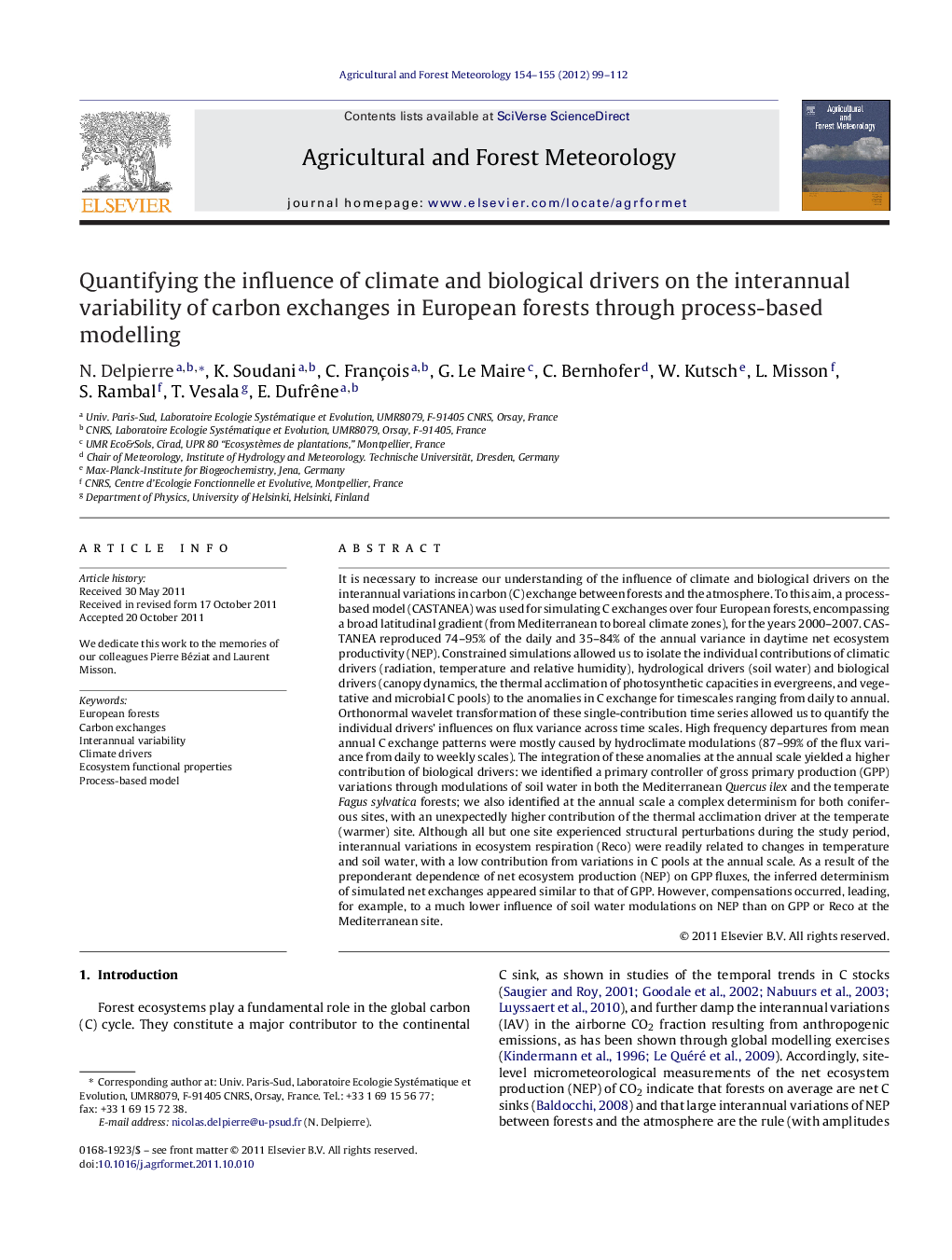| کد مقاله | کد نشریه | سال انتشار | مقاله انگلیسی | نسخه تمام متن |
|---|---|---|---|---|
| 82090 | 158372 | 2012 | 14 صفحه PDF | دانلود رایگان |

It is necessary to increase our understanding of the influence of climate and biological drivers on the interannual variations in carbon (C) exchange between forests and the atmosphere. To this aim, a process-based model (CASTANEA) was used for simulating C exchanges over four European forests, encompassing a broad latitudinal gradient (from Mediterranean to boreal climate zones), for the years 2000–2007. CASTANEA reproduced 74–95% of the daily and 35–84% of the annual variance in daytime net ecosystem productivity (NEP). Constrained simulations allowed us to isolate the individual contributions of climatic drivers (radiation, temperature and relative humidity), hydrological drivers (soil water) and biological drivers (canopy dynamics, the thermal acclimation of photosynthetic capacities in evergreens, and vegetative and microbial C pools) to the anomalies in C exchange for timescales ranging from daily to annual. Orthonormal wavelet transformation of these single-contribution time series allowed us to quantify the individual drivers’ influences on flux variance across time scales. High frequency departures from mean annual C exchange patterns were mostly caused by hydroclimate modulations (87–99% of the flux variance from daily to weekly scales). The integration of these anomalies at the annual scale yielded a higher contribution of biological drivers: we identified a primary controller of gross primary production (GPP) variations through modulations of soil water in both the Mediterranean Quercus ilex and the temperate Fagus sylvatica forests; we also identified at the annual scale a complex determinism for both coniferous sites, with an unexpectedly higher contribution of the thermal acclimation driver at the temperate (warmer) site. Although all but one site experienced structural perturbations during the study period, interannual variations in ecosystem respiration (Reco) were readily related to changes in temperature and soil water, with a low contribution from variations in C pools at the annual scale. As a result of the preponderant dependence of net ecosystem production (NEP) on GPP fluxes, the inferred determinism of simulated net exchanges appeared similar to that of GPP. However, compensations occurred, leading, for example, to a much lower influence of soil water modulations on NEP than on GPP or Reco at the Mediterranean site.
► A mechanistic model reproduced the interannual variability of C fluxes of 4 forests
► We quantified the influence of climate and biological drivers on flux variance
► 87–99% of the high frequency flux variance was caused by hydroclimate drivers
► The interannual variance of GPP and NEP was partially driven by biological factors
► The interannual variance of Reco was almost insensitive to stand perturbations
Journal: Agricultural and Forest Meteorology - Volumes 154–155, 15 March 2012, Pages 99–112